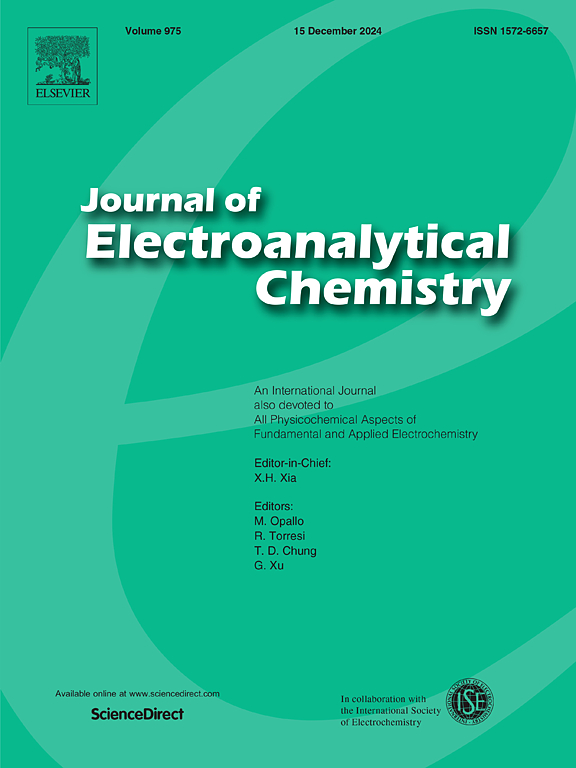Cu-doped Prussian blue analog-derived (Ni,Co)Se2 nanocubes for high-performance supercapattery cathode
IF 4.1
3区 化学
Q1 CHEMISTRY, ANALYTICAL
引用次数: 0
Abstract
Selenide materials are promising for electrochemical energy storage owing to their high theoretical capacity but designing nanostructures with unique architectures and energy properties is still challenging. In this paper, Cu-(Ni,Co)Se2 nanocubes were prepared using nickel cobalt based-Prussian blue (NiCo-PBA) as a template through high-temperature selenization and ion doping. The introduction of Cu ions significantly enhances the conductivity of the materials and their vacancy defects concentrations, resulting in improved electrode capacity and cycle stability. The capacity of the optimized Cu-(Ni,Co)Se2 material reaches 140.3 mAh g−1 and maintains 81.1 % after 5000 cycles. When assembled into Cu-(Ni,Co)Se2//AC supercapattery, the device provides a high energy density of 41.9 Wh kg−1 at a power density of 750.0 W kg−1, coupled with excellent cycling stability of 87.3 % after 5000 cycles. Overall, the improved capacitive features of the proposed Se material are potential for supercapattery applications.

高性能超级电池阴极用掺铜普鲁士蓝模拟衍生(Ni,Co)Se2纳米立方
硒化材料具有较高的理论容量,在电化学储能方面具有广阔的应用前景,但设计具有独特结构和能量特性的纳米结构仍然具有挑战性。本文以镍钴基普鲁士蓝(NiCo-PBA)为模板,通过高温硒化和离子掺杂制备了Cu-(Ni,Co)Se2纳米立方体。Cu离子的引入显著提高了材料的导电性和空位缺陷浓度,从而提高了电极容量和循环稳定性。优化后的Cu-(Ni,Co)Se2材料的容量达到140.3 mAh g−1,循环5000次后保持81.1%。当组装成Cu-(Ni,Co)Se2//AC超级电池时,该器件在功率密度为750.0 W kg - 1的情况下提供了41.9 Wh kg - 1的高能量密度,并且在5000次循环后具有87.3%的优异循环稳定性。总的来说,改进的硒材料的电容特性是潜在的超级电容器的应用。
本文章由计算机程序翻译,如有差异,请以英文原文为准。
求助全文
约1分钟内获得全文
求助全文
来源期刊
CiteScore
7.80
自引率
6.70%
发文量
912
审稿时长
2.4 months
期刊介绍:
The Journal of Electroanalytical Chemistry is the foremost international journal devoted to the interdisciplinary subject of electrochemistry in all its aspects, theoretical as well as applied.
Electrochemistry is a wide ranging area that is in a state of continuous evolution. Rather than compiling a long list of topics covered by the Journal, the editors would like to draw particular attention to the key issues of novelty, topicality and quality. Papers should present new and interesting electrochemical science in a way that is accessible to the reader. The presentation and discussion should be at a level that is consistent with the international status of the Journal. Reports describing the application of well-established techniques to problems that are essentially technical will not be accepted. Similarly, papers that report observations but fail to provide adequate interpretation will be rejected by the Editors. Papers dealing with technical electrochemistry should be submitted to other specialist journals unless the authors can show that their work provides substantially new insights into electrochemical processes.

 求助内容:
求助内容: 应助结果提醒方式:
应助结果提醒方式:


